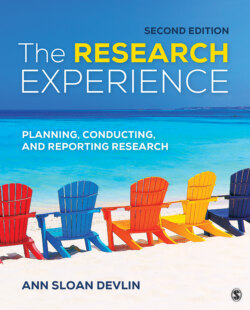Читать книгу The Research Experience - Ann Sloan Devlin - Страница 92
The Introduction
ОглавлениеThe Introduction is usually shaped like a funnel, starting out broadly with some general comments about the area of interest, then gradually tapering to focus on particular variables, and finally narrowing to the specific hypotheses, which are usually stated at the end of the introduction (more aspects of writing will be covered in Chapter 13). In the presentation of the literature, which names (key players) and theories appear repeatedly? Are there different “camps” representing conflicting theoretical orientations? Work that is cited repeatedly is sometimes called seminal or keystone. Look out for these studies because they may have historical, methodological, or theoretical importance. Two techniques, tree backward and tree forward (Martin, 2007, pp. 125–126), help you canvas the literature to make sure you have identified the important work. When you tree backward, you identify a citation in the article you are reading that looks promising (often on the basis of what was said about it in the article), and then go to THAT article to examine its references. You continue to do this, working backward in time from the most recent to the earliest articles. If you tree forward, you see which other (more recent) authors have cited the article you are currently reading. To tree forward, you use a database like the Social Sciences Citation Index or the “cited by” functions of PsycINFO or Scopus.
Introduction: Part of a manuscript that introduces the topic, reviews relevant literature, and ends with hypotheses.
Tree backward: Search technique for working backward through previously published work to obtain resources.
Tree forward: search technique looking forward to see what more recent articles have cited the article of interest.
